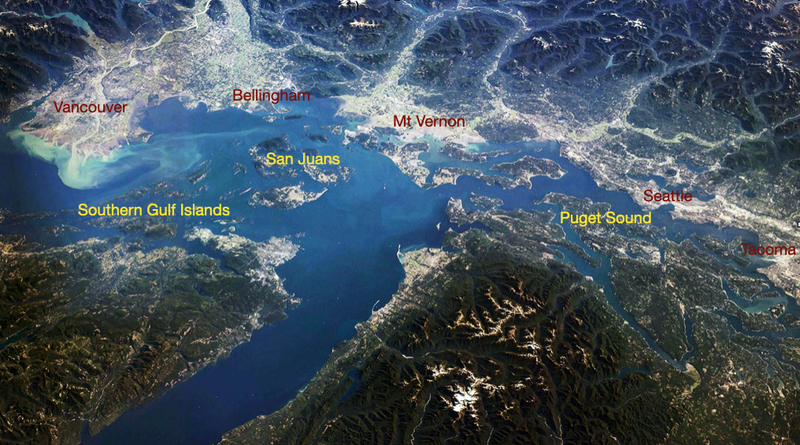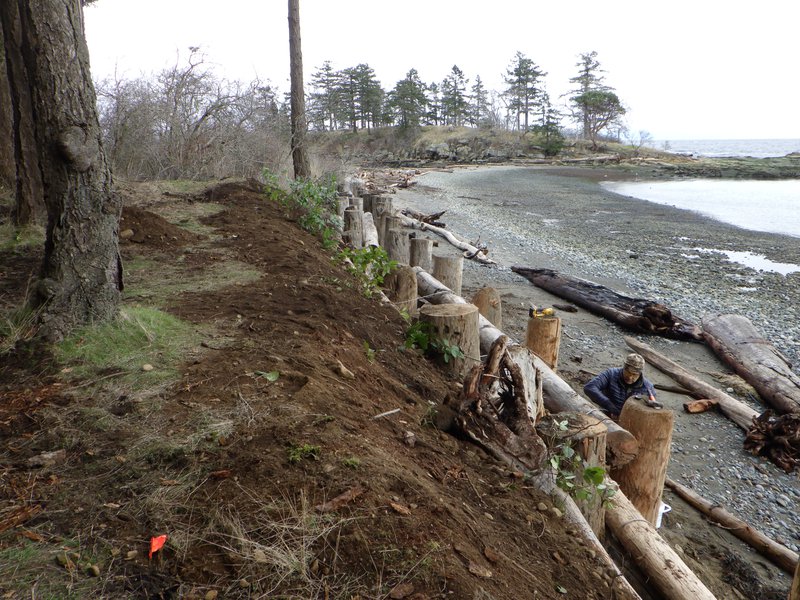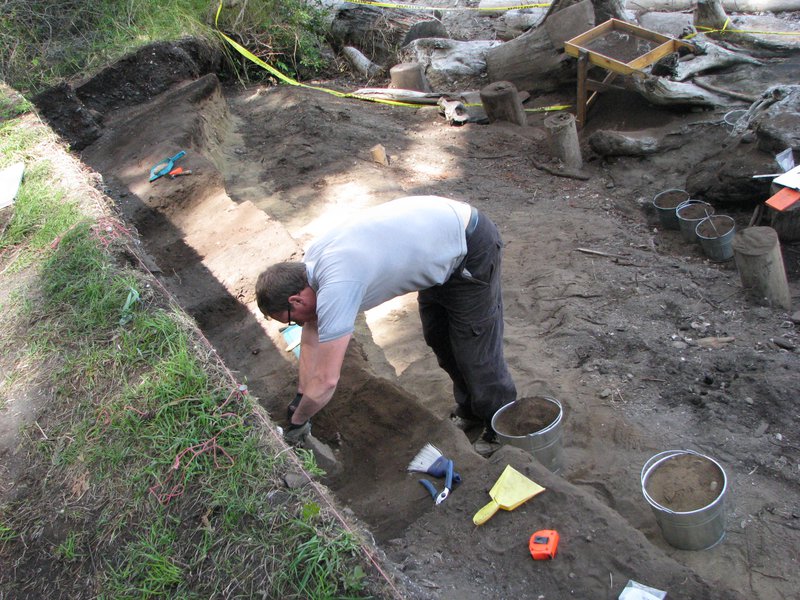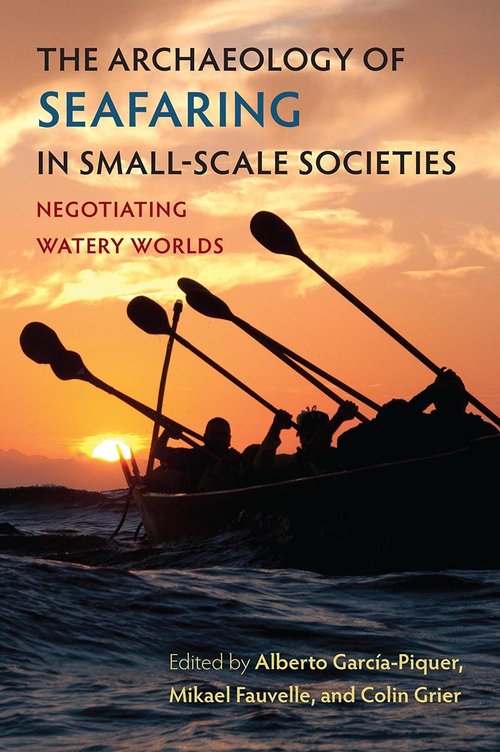
I am originally from Canada, having grown up initially on the western prairies and then on the Pacific coast, residing in Vancouver BC for most of my early life.
I took up a tenure-track position at WSU Pullman in 2007. I then re-located to the Vancouver, WA campus of WSU in 2020 to be closer to my field research sites along the Northwest Coast. I currently live in Portland, Oregon.
Educational background:
My archaeological endeavors have taken me around the world. I have worked in various areas of Europe (Ireland, Germany), Eastern Asia (Korea and Japan) and the high Arctic of Canada (where I got my start in archaeological fieldwork). I have been a visiting Professor at Seoul National University in Korea and a visiting researcher at The Research Institute for Humanity and Nature in Kyoto, Japan. I have also been a postdoctoral researcher and visiting scholar at the University of British Columbia, back in my hometown.
I got into archaeology after a few years of backpacking and working in Europe and Africa after graduating high school. The world is a diverse and amazing place, but also riddled with inequality and baffling complexity. Anthropology provides a lens to contextualize all that, and archaeology offers a long term perspective for addressing two key questions: Could things have been otherwise? Can they yet be otherwise?
[A list of my publications appears at the bottom of this page]
My last thirty years in archaeology has involved pursuing answers to a diversity of problems and questions about our collective human past. My approach coheres along several critical themes, including:
Northwest Coast Peoples and Their Long-Term History, as seen through archaeology
Indigenous, Collaborative, and Community Archaeology
Advanced Methods
Addressing these issues has required an array of methodological tools, mobilized in an overlapping way to address key research issues. Methodologies and technologies I employ include:

Northwest Coast Peoples and their Histories
My research is grounded foremost in the archaeology of the Pacific Northwest of North America. I take a long-term perspective, investigating the economic organization, social institutions and political economy of the region’s complex hunter-gatherer-fisher peoples. My specific study area is the Salish Sea in southwestern British Columbia, the traditional territory of Coast Salish peoples.
My field research has focused primarily on the archaeological record of the southern Gulf Islands of BC, Here, I am looking into the relationship between the development of large households, village formation, social inequality, resource ownership and constructed landscapes. This broad project includes ongoing investigations of households, communities and regional settlement patterns. I work collaboratively with Hul’q'umi’num peoples for this, foregrounding their research agendas and applied goals in my research.
My Current Funded Research
My most recent NSF grant explored new geophysical approaches (primarily ground penetrating radar) to overcome impasses in our ability to map ancient households and communities on the Northwest Coast. It is critical to acquire an increased sample of house and village site plans, since changing household and community organization is central to many theories and explanations for culture change in the region. Large households have typically been seen as the “economic engines” of social complexity. Permanent villages are viewed as the hallmark of a settled way of life, involving more institutionalized land tenure systems. Village complexes, incorporating extensive terraforming and monumental construction, reflect long-standing connections to keystone places.
Data from houses and villages are thus critical for charting long-term histories. Recognizing this, it is all the more critical to acquire these data before we lose it to shoreline erosion and climate change. Improving our geophysical methods offers and opportunity to potential obtain data before it is lost to climate change.
Current Field Sites
Theoretical Perspective
The Northwest Coast was and remains home to Indigenous societies that have always stood as an apparent exception to standard anthropological ideas for how changes toward increasing scale and complexity occurred. Indeed, they challenge the very notion that such changes are predominantly linear, additive and progressive.
I situate my focus on the Northwest Coast in relation to other similarly-scaled societies around the world, undertaking a broadly comparative approach to identify commonalities and unique trajectories in their histories. I consider the novel kinds of ecological and social relationships that develop as societies construct their landscapes and manage resources in sophisticated and sustainable ways, and how increasing investments in built environments generate profound connections to place over the long term.
The Americas provides many examples of coastal hunter-gatherer-fisher peoples that had engaged relationships with their landscapes and ecologies, and who constructed their worlds through large-scale terraforming and engineering efforts. Archaic peoples of the US southeast, the Florida peninsula, California, and the eastern coast of South America provide critical examples for comparison.
East Asia, specifically the Korean Peninsula and Japan, was home to coastal hunter-gatherer-fisher societies that provide another useful point of comparison and contrast to the Northwest Coast. In Korea and Japan, coastal hunter-gathers ultimately transitioned to intensive agricultural production. Yet, with the recent realization that Northwest Coast societies had similarly complex systems of plant resource management (but without cereal agriculture), ‘social complexity’ appears connected with changing human-land relationships more broadly than with food production specifically.
My overall approach is to consider these societies on their own terms rather than attempting to shoehorn their practices into dated and reductionist categories that have been mainstays in anthropological analysis since its inception.
Sustainability and Resilience: The Past and the Future
My work has been increasingly interdisciplinary, connecting archaeology with current issues of sustainability and resilience, climate change and ecological restoration. Archaeology has much to contribute to finding a way forward for human societies on this planet, and I increasingly measuring my contributions to knowledge by how they advance sustainability for ourselves now and in the future.
More specifically, the complex landscape engagements of the coastal peoples I study through archaeology inform us on how long-standing practices of sustainable resource management worked, and how these strategies can be incorporated into our own practices. Fostering a sustainable future is an effort that archaeology must be a part of.
A more tangible element of this research is shoreline erosion mitigation and confronting the loss of ancestral/archaeological sites on the world’s coasts due to climate change-induced sea level rise. I have actively and collaboratively worked to stabilize shorelines in front of archaeological sites, recognizing that the Indigenous peoples who constructed and managed these places for millennia are now alienated from many of them through Colonial land appropriation. Restoring these places and Indigenous shoreline management practices is this a key element of re-establishing autonomy for Coast Salish peoples, and represents an act of reconciliation.
For an example of this approach, see the following:
Nearshore Summit presentation on shoreline restoration (12 mins)

Community-Driven Archaeology and Partnerships with Indigenous Communities
In my archaeological research over the last 30 years, I have prioritized strong collaborative relationships and partnerships with the Peoples whose history I study — Indigenous peoples of the western coasts of North America. This is only just and proper given the disenfranchising of Indigenous peoples from their past, present, and future over the last two centuries.
But it also reflects the reality that Indigenous peoples, through their particular ontologies, epistemologies, and practices, have much to contribute to our collective way forward. They have existed successfully and sustainably since time immemorial in ecosystems that have recently been heavily degraded and overexploited by Settler populations — those very ecosystems which we are now struggling to restore.
I also am committed to conveying to students the importance of ethical, equitable and collaborative partnerships with Indigenous peoples, as Indigenous peoples have an inalienable right to manage their ancestral places.
A concrete example of this commitment are my recent efforts to apply ground penetrating radar (GPR) to the search for missing children in unmarked graves at Indian Residential Schools in Canada and the USA. My NSF-funded research involves pushing the limits of what GPR can and cannot accomplish n archaeological contexts, an effort that dovetails with this national project on Missing Children now occurring in Canada. As a member of the Canadian Archaeological Association’s Working Group on Unmarked Graves, I have worked to translate what I am learning to aid this important project and serve the survivors and communities affected. I also worked in the early 2000s as a contract researcher for the Government of Canada, which was then undertaking archival investigation into the history of these school systems. As such, many elements of my past and present research have recently been drawn together in service of truth, reconciliation and healing.
For more on this, see:
Truth, Reconciliation and Ground Penetrating Radar (60 min presentation)

I teach undergraduate courses on the Vancouver campus and graduate-level courses to both the Pullman and Vancouver campuses.
Undergraduate offerings (on a rotating basis):
Graduate offerings:
Previously taught graduate courses (which other faculty are currently offering):
The Northwest Coast Archaeology lab is a physical space located on the Vancouver campus of WSU (VCLS 312) in southwestern Washington. It is a facility devoted to the analysis of archaeological data. It acts as a hub for WSU archaeological research on the Northwest Coast of North America.
The lab houses significant equipment and infrastructure, including microscopes, bone and stone tool reference collections, geophysical survey and GIS equipment, computer and photography workstations, and an espresso maker. Artifacts and faunal collections relating to my active research are also housed here, providing significant opportunities of student projects and research.

I supervise graduate students pursuing MA and PhD degrees with focus on Northwest Coast peoples’ past, present and future. Students are integrated into the Northwest Coast Archaeology Lab, and work on various projects related to the Northwest Coast archaeology
Students I currently supervise include:
MA
Tyler Baley (resource management, inequality and social/spatial networks in Northwest Coast societies)
Alexis Crow (regional versus local patterns of change along the Columbia River)
Elizabeth Seger — human/environment interactions in the Portland Basin area of the Lower Columbia River
PhD
Kate Shantry (human responses to landscape change in southern Puget Sound)
Recent graduates:
MA
PhD
Postdoctoral Researchers
Dr Alberto Garcia-Piquer
Albert was in residence as a postdoctoral researcher at WSU in 2024 and 2025. He is from Barcelona, and works in Patagonia in southern South America. Being based at the Northwest Coast Archaeology Lab on the Vancouver campus, we have worked to explore how seafaring and boat technologies have changed and influenced small-scale societies around the world. This effort has culminated in a new book from the University Press of Florida available in late 2025.
See: Albert Garcia-Piquer's Researchgate Page
Dr Liam Wadsworth
https://anth.ubc.ca/profile/william-wadsworth/
Based at the University of British Columbia, Liam is working with Andrew Martindale (faculty in Anthropology at UBC) and myself to further to explore the application of high-tech and non-invasive archaeological methods for studying they landscapes of the Hul’q’umi’num’ peoples of the Salish Sea.
Taking on new students:
My NSF-funded research supports students and offers opportunities for student thesis and dissertation research. I am always interested in talking with motivated students about the potential to join my research team. I do prioritize students with a Northwest Coast archaeology background, and students who have GIS and other geospatial or geophysical training who want to work in the Pacific Northwest, especially at my field sites in British Columbia. I co-publishing research with my graduate students to build their careers in a competitive academic world.
I am committed to training the next generation of Northwest Coast researchers and anthropological thinkers to carry on with and expand upon the focused projects and broader research questions I am pursuing.
NEW EDITED VOLUME!
The Archaeology of Seafaring in Small Scale Societies.
Edited by Alberto Garcia-Piqier, Mikael Fauvelle, and Colin Grier
University Press of Florida
Out November 2025
https://floridapress.org/9780813079493/the-archaeology-of-seafaring-in-small-scale-societies/

[in review] Canadian Archaeological Association Working Group on Unmarked Graves — Archaeology as Truth-Telling and Restorative Justice: The Role of Archaeology in the Search for Missing Children in Canada. American Indian Quarterly.
[in press] Grier, Colin and Erin Smith — Shell-bearing Deposits as Landscapes, Relations and Histories: A Salish Sea Archaeological Perspective. In West Coast Shell Middens: Place-based Ontologies and Socially Constructed Landscapes, edited by Elliot Helmer and Mark Tveskov. University of Florida Press.
2025 Wadsworth, William T. D., Colin Grier, Kisha Supernant and Andrew Martindale — The Archaeological Prospection of Plankhouse Villages on the Northwest Coast of North America. ArcheoSciences 49(1):569-574.
2025 Grier, Colin, Mikael Fauvelle and Alberto Garcia-Piquer — Negotiating Watery Worlds: Crafting a Research Agenda. In Negotiating Watery Worlds: Seafaring and Watercraft in Small-scale Societies, edited by Albert Garcia-Piquer, Michael Fauvelle and Colin Grier. University Press of Florida.
2025 Michael Fauvelle, Albert Garcia-Piquer and Grier, Colin — Why Boats Matter: Breaking Down the Terrestrial Bias in Archaeology. In Negotiating Watery Worlds: Seafaring and Watercraft in Small-scale Societies, edited by Alberto Garcia-Piquer, Michael Fauvelle and Colin Grier. University Press of Florida.
2023 Grier, Colin — Social Change and the Construction of Landscapes in the Salish Sea. In Complex Fisher-Hunter-Gatherer Archaeology in North America, edited by Christina Perry Sampson, pp. 22-56. University of Florida Press.
2023 Martindale, Andrew, William T.D. Wadsworth, Eric Simons, Brian Whiting and Colin Grier — The Challenges of Signal Interpretation of Burials in Ground-penetrating Radar. Archaeological Prospection DOI: https://onlinelibrary.wiley.com/doi/10.1002/arp.1920
2022 Grier, Colin — Indigenous Shoreline Management in the Salish Sea: The View from Archaeology. The 2021 Puget Sound Nearshore Restoration Summit Proceedings, edited by Letitia Conway-Cranos, Jason D. Toft, David J. Trimbach, Hannah Faulkner, Jay Krienitz, Daron Williams and Simone des Roches, pp. 229-232. Washington Department of Fish and Wildlife.
2022 Holland-Lulewicz, Jacob, Victor Thompson, Jennifer Birch and Colin Grier —Keystone Institutions of Democratic Governance across Indigenous North America. Frontiers in Political Science DOI:10.3389/fpos.2022.840049
2020 Furholt, Martin, Colin Grier, Matthew Spriggs and Timothy Earle — Political Economy in the Archaeology of Emergent Complexity: a Synthesis of Bottom-Up and Top-Down Approaches. Journal of Archaeological Method and Theory 27:157-191.
2020 Ames, Kenneth M. and Colin Grier — Inequality on the Pacific Northwest Coast of North America measured by house-floor area and storage capacity. Antiquity 94(376):1042-1059.
2020 Wadsworth, William, Andrew Martindale, Colin Grier and Kisha Supernant — The application and evaluation of remote sensing techniques to household archaeology on the Northwest Coast. In Studies in Archaeometry, edited by Mario Ramirez Galan and Ronda S. Bard, pp. 218-266. Archaeopress Publishing, Oxford.
2019 Grier, Colin — What can the Theory of Anarchism and Its Analytical Possibilities do for us? Archaeological Dialogues 26:74-75.
2018 Hopt, Justin and Colin Grier — Continuity amidst Change: Village Organization and Fishing Subsistence at the Dionisio Point Locality in coastal southern British Columbia. Journal of Island and Coastal Archaeology 13(1)21-42.
2018 Colin Grier — Commentary on “Many Seasons Ago: Slavery and Its Rejection among Foragers on the Pacific Coast of North America” by David Wengrow and David Graeber. American Anthropologist 120(2):254-255.
2017 Grier, Colin, Bill Angelbeck, and Eric McLay — Terraforming and Monumentality as Long-term Social Practice in the Salish Sea Region of the Northwest Coast of North America. Hunter Gatherer Research 3(1):107–132.
2017 Grier, Colin and Margo Schwadron — Terraforming and Monumentality in Hunter-Gatherer-Fisher Societies: Towards a Conceptual and Analytical Framework. Hunter Gatherer Research 3(1):3-8.
2017 Grier, Colin and Bill Angelbeck — Tradeoffs in Coast Salish Social Action: Balancing Autonomy, Inequality, and Sustainability. In The Give and Take and Sustainability: Archaeological and Anthropological Perspectives on Tradeoffs, edited by Michelle Hegmon, pp. 198-221. Cambridge University Press.
2017 Grier, Colin — Expanding Notions of Hunter-Gatherer Diversity:Identifying Core Organizational Principles and Practices in Coast Salish Societies of the Northwest Coast of North America. In The Diversity of Hunter-Gatherer Pasts, edited by Graeme Warren and Bill Finlayson, pp. 16-33. Oxbow Books.
2017 Dolan, Patrick, Colin Grier, Katie Simon and Christine Markussen — Magnetic gradient survey of the Marpole Period Dionisio Point (DgRv-003) Plankhouse village, Northwest Coast of North America. Journal of Field Archaeology 42(5):437-449.
2017 Grier, Colin, Lilian Alessa and Andrew Kliskey — Looking to the Past to Shape the Future: Addressing Social-Ecological Change and Adaptive Trade-offs. Regional Environmental Change 17:1205–1215.
2016 Grier, Colin — Review of Constructing Histories: Archaic Freshwater Shell Mounds and Social Landscapes of the St. Johns River, Florida by Asa Randall (2015). American Antiquity 81(3):600-601.
2015 Grier, Colin — Past Perspectives and Recent Developments in the Archaeology of the Northwest Coast. Cultural Antiqua 67:45-56. (In Japanese. English version available from the author)
2015 Rorabaugh, Adam, Nichole Davenport and Colin Grier — Characterizing Crystalline Volcanic Rock (CVR) Deposits from Galiano Island, B.C., Canada: Implications for Lithic Material Procurement at the Dionisio Point Locality. Journal of Archaeological Science Reports 3:591-602.
2015 Witt, Kelsey E., Kathleen Judd, Andrew Kitchen, Colin Grier, Timothy A. Kohler, Scott G. Ortman, Brian M. Kemp and Ripan S. Malhi — DNA Analysis of Ancient Dogs of the Americas: Identifying Possible Founding Haplotypes and Reconstructing Population Histories. Journal of Human Evolution 79:105-118.
2014 Grier, Colin — Landscape Construction, Ownership and Social Change in the Southern Gulf Islands of British Columbia. Canadian Journal of Archaeology 38(1):211-249.
2014 Grier, Colin — Which Way Forward? Introduction to the Special Section. Canadian Journal of Archaeology 38(1):135-139.
2014 Kemp Brian M, Cara Monroe, K. G. Judd, Erin Reams, and Colin Grier — Evaluation of Methods that Subdue the Effects of Polymerase Chain Reaction Inhibitors in the Study of Ancient and Degraded DNA. Journal of Archaeological Science 42: 373-380.
2014 Angelbeck, Bill and Colin Grier — From Paradigms to Practices: Pursuing Horizontal and Long-Term Relationships with Indigenous Peoples for Archaeological Heritage. Canadian Journal of Archaeology 38(2):519-540.
2013 Grier, Colin, Kelli Flanigan, Misa Winters, Leah G. Jordan, Susan Lukowski and Brian M. Kemp — Using Ancient DNA Identification and Osteometric Measures of Archaeological Pacific Salmon Vertebrae for Reconstructing Salmon Fisheries and Site Seasonality at Dionisio Point, British Columbia. Journal of Archaeological Science 40(1):544-555.
2013 Monroe, Cara, Colin Grier and Brian M. Kemp — Evaluating the Efficacy of various Thermo-stable Polymerases against co-extracted PCR Inhibitors in Ancient DNA Samples. Forensic Science International 228:142-153.
2012 Angelbeck, Bill and Colin Grier — Anarchism and the Archaeology of Anarchic Societies: Resistance to Centralization in the Coast Salish Region of the Pacific Northwest Coast (with Comments and Reply). Current Anthropology 53(5):547-587.
2012 Grier, Colin and Jangsuk Kim — Resource Control and the Development of Political Economies in Small-Scale Societies: Contrasting Prehistoric Southwestern Korea and the Coast Salish Region of Northwestern North America. Journal of Anthropological Research 68(1):1-34.
2012 Grier, Colin and Susan Lukowski — On Villages, Quantification and Appropriate Context: A Comment on “Social Archaeology of a Northwest Coast House” by Paul A. Ewonus. Journal of Island and Coastal Archaeology 7(3):430-436.
2012 Grier, Colin — Thinking through Local and Regional Histories: Recent Research at Dionisio Point and in the Outer Gulf Islands. The Midden 44(1):6-9.
2010 Grier, Colin — Probable Pasts and Possible Futures: Issues in the Reconstruction of Complex Hunter-Gatherers of the Northwest Coast. In La Excepción y la Norma: Las Sociedades Indígenas de la Costa Noroeste de Norteamérica desde la Archaeología,edited by A. Vila and J. Estévez, pp. 116-134. Treballs D’Ethnoarqueologia, 8, Madrid. (In Spanish with extended English abstract; English version available).
2010 Grier, Colin — Review of Projectile Point Sequences in Northwestern North America. In Canadian Journal of Archaeology 34:115-118.
2009 Grier, Colin; Patrick Dolan, Kelly Derr and Eric B. McLay — Assessing Sea Level Changes in the Southern Gulf Islands of British Columbia Using Archaeological Data from Coastal Spit Locations. Canadian Journal of Archaeology 33:254-280.
2009 Corr, Linda T., Michael P Richards, Colin Grier, Alexander Mackie and Richard P. Evershed — Probing Dietary Change of Kwaday Dan Ts¹inchi, An Ancient Glacier Body from British Columbia II: Deconvoluting Whole Skin and Bone Collagen Delta 13C Values via Carbon Isotope Analysis of Individual Amino Acids. Journal of Archaeological Science 36:12-18.
2008 Grier, Colin and Chief Lisa Shaver — Working Together: The Role of Archaeologists and First Nations in Sorting Out Some Very Old Problems in British Columbia. The SAA Record 8(1):33-35.
2007 Grier, Colin — Consuming the Recent for Constructing the Ancient: The Role of Ethnography in Coast Salish Archaeological Interpretation. In Be Of Good Mind: Essays on the Coast Salish, edited by Bruce G. Miller. UBC Press, Vancouver, Canada.
2006 Colin Grier, Jangsuk Kim and Junzo Uchiyama (editors) — Beyond Affluent Foragers: Rethinking Hunter-Gatherer Complexity. Oxbow Books, Oxford, UK.
2006 Grier, Colin — Affluence on the Prehistoric Northwest Coast of North America. In Beyond Affluent Foragers: Rethinking Hunter-Gatherer Complexity, edited by Colin Grier, Jangsuk Kim and Junzo Uchiyama, pp. 126-135. Oxbow Books, Oxford, UK.
2006 Kim, Jangsuk and Colin Grier — Beyond Affluent Foragers. In Beyond Affluent Foragers: Rethinking Hunter-Gatherer Complexity, edited by Colin Grier, Jangsuk Kim and Junzo Uchiyama, pp. 192-200. Oxbow Books, Oxford.
2006 Grier, Colin — Temporality in Northwest Coast Households. In Household Archaeology on the Northwest Coast, edited by Elizabeth A. Sobel, D. Ann Trieu Gahr, and Kenneth M. Ames, pp. 97-119. International Monographs in Prehistory, Ann Arbor.
2006 Grier, Colin — The Political Context of Prehistoric Coast Salish Residences on the Northwest Coast.In Palaces and Power in the Americas: From Peru to the Northwest Coast, edited by J.J. Christie and P.J. Sarro, pp. 141-165. University of Texas Press, Austin.
2003 Grier, Colin — Dimensions of Regional Interaction in the Prehistoric Gulf of Georgia. In Emerging from the Mist: Studies in Northwest Coast Culture History, edited by R.G. Matson, Quentin Mackie, and Gary Coupland, pp. 170-187. UBC Press, Vancouver.
2000 Grier, Colin — Labor Organization and Social Hierarchies in North American Arctic Whaling Societies. In Hierarchies in Action, Cui Bono?, edited by Michael W. Diehl, pp. 264-283. Center for Archaeological Investigations Occasional Paper No. 27, Southern Illinois University, Carbondale, Illinois.
1999 Grier, Colin — The Organization of Production in Prehistoric Thule Whaling Societies. Canadian Journal of Archaeology 23:11-28.
1994 Grier, Colin and James M. Savelle — Intrasite Spatial Patterning and Thule Eskimo Social Organization. Arctic Anthropology 31(2):95-107.